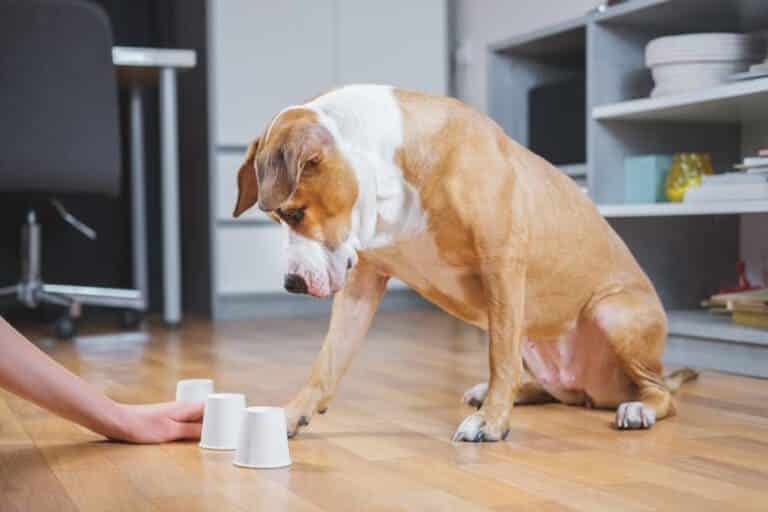Table of Contents
Calling all the pet owners, you are wrong if you think that daily walks are enough for your furry friend. Apart from their essential training and walks, their boredom will lead to irritated behavior, leash reactivity, and much more. This is where the cognitive activity kicks in. Engaging your canine partners in mental activity fosters enhanced focus, sharp problem-solving skills, reduced boredom, and much more. So, get ready for some fun activity and brain training for dogs. It is high time you realize that teaching them basic commands and getting them the best paracord collars won’t do enough. Let’s learn the creative brain training for dogs.
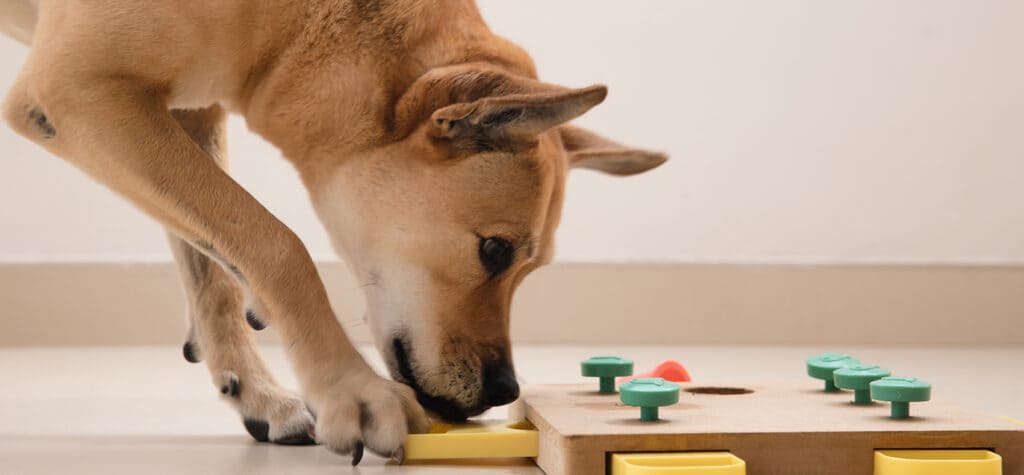
What is Brain Training for Dogs?
Before we elucidate the training games in detail, let us discuss the detailed concept. Dog brain training is a set of mental exercises and activities intended to improve the cognitive, problem-solving, and general intelligence of the breed. Toy puzzles, interactive games, obedience training, and teaching new tricks are a few examples of these activities. The intention is to cognitively engage the dog and keep them involved in activities that will keep them from getting bored and acting out. Additionally, brain training enhances the dog-owner relationship, sharpens the dog’s focus and attention span, and can be an enjoyable way to give the dog both cerebral and physical exercise. For dogs of all ages and kinds, it is helpful.
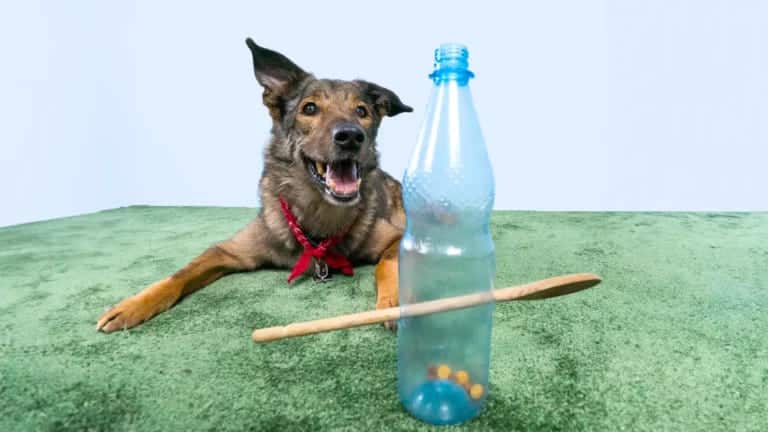
6 Effective Brain Training Games for Dogs
Now that you know the basic concept of brain training, let us talk about the brain training games for your dog. From the dog puzzle toys to the muffin tin, hide and seek, and the use of snuffle mats, every game is curated so as to boost the efficiency of your puppy’s brain. It will not only contribute to physical exercise but also kill their boredom.
Let’s explain the nuances and intricacies of each game:
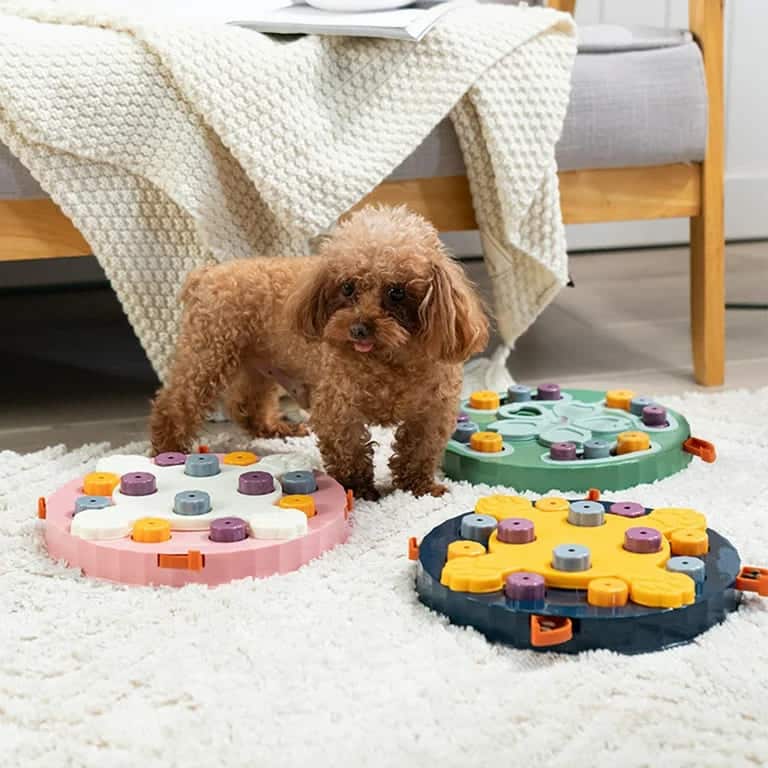
1. Interactive Feeders and Puzzle Toys
Toy Categories Include
- KONGs: Sturdy rubber toys that can be filled with kibble, peanut butter, or goodies. available in a range of sizes and intensities to fit varied chewing strengths and breeds.
- Treat-Dispensing Balls: These are Interactive dog toys such as balls that, when rolled or otherwise handled by the dog, release treats through holes or sections. Some can be adjusted in terms of difficulty. They help in mental stimulation.
- Puzzle Boards: Flat boards with treat-hidden chambers that slide or flip. To get to the treats, dogs have to figure out how to move the pieces. Practicing this game will enhance problem-solving skills. This is one of the best brain training for dogs entailing a unique dog training course.
Advantages
- Cognitive Excitation: Maintains dogs’ interest and challenge as they strive to extract the rewards.
- Reduces Boredom: Prevents negative behaviors linked to boredom and offers entertainment.
- Slows Eating: Promotes more leisurely eating, which can facilitate digestion and help avoid overindulging.
How to Use
- Start Simple: Offer rewards that are easily available as a way to introduce the toy.
- Increase Complexity: Change the toy’s level of complexity to gradually make it more tough. It will be a fun twist to brain-training games for dogs.
- Supervise Initially: Make sure the dog knows how to make use of the toy and keep an eye out for any possible safety concerns.

2. Hide and Seek as Brain Training for Dogs
This is the second mentally stimulating training game for dogs. It elicits the behaviors of proactive vigor and excitement.
Setup
- Indoors: Tuck toys or sweets into corners, behind drapes, or beneath furniture.
- Outside: Make use of the park, garden, or yard. Place objects behind shrubs, trees, or other natural features.
Levels of Difficulty
- Starter: Hide toys, dog treats, or gifts slightly or leave them visible.
- Intermediate: Keep objects out of the dog’s reach but hidden in more difficult places.
- Advanced: Use more intricate hiding places that call for the dog to apply its sense of smell and reasoning abilities.
Advantages
- Activates Scent Abilities: Strengthens the dog’s innate ability and helps in encouraging your dog to track and sniff.
- Mental Exercise: Promotes critical thinking and problem-solving skills.
- Physical Activity: Encourages mobility and discovery.
Training Tips
- Use Favorite Treats/Toys: Begin with items such as tennis balls that are highly motivating.
- Reward Finds: Give the dog praise and a treat each time they locate the hidden object.
- Increase Challenge: To keep puppies interested and challenged, progressively increase the game’s difficulty. This interactive brain game will lead your puppy to be more active.
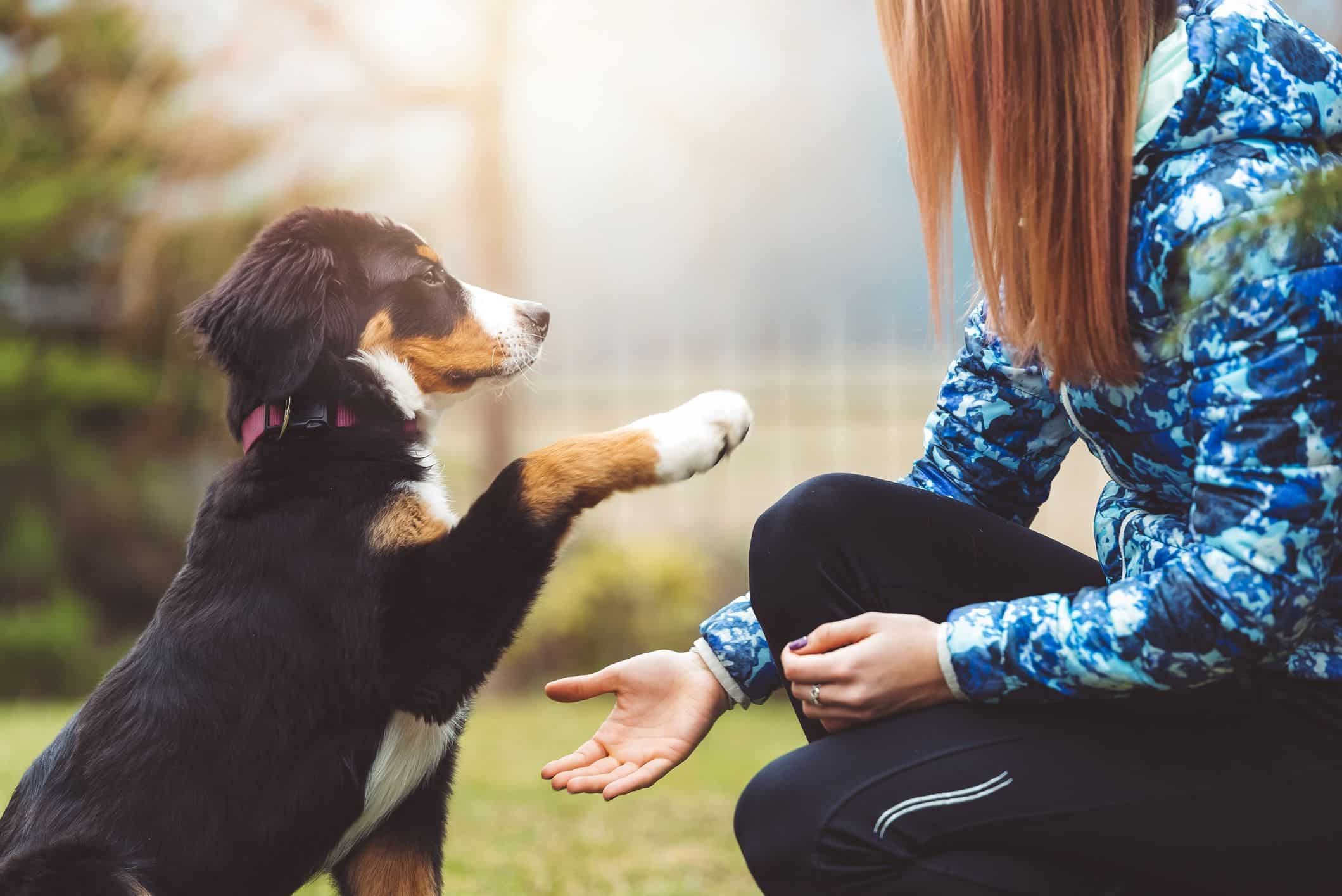
3. Tips and Training for Obedience
Basic Commands
- Sit, Stay, Come, Down: Fundamental commands that set the groundwork for appropriate conduct and security.
- Leave It, Drop It: Promotes self-control and caution around potentially dangerous objects.
Advanced Tricks
- Roll Over, Shake, Play Dead: A humorous trick that tests the dog’s recall and ability to acquire new skills.
- Fetch Specific Items: Improve your dog’s comprehension and retrieval skills by teaching them to bring specific objects when called upon. Your dog touches, sniffs those objects, and fetches them after they recognize it.
Advantages
- Supports Good Behavior: Encourages self-control and obedience.
- Strengthens Bond: Promotes good interactions that strengthen the bond between the dog and owner.
- Mental Stimulation: Maintains the dog’s mental clarity and activity.
Training Tips
- Positive Reinforcement: Reward good commands and tricks with play, treats, and praise.
- Consistent Practice: Short training sessions conducted on a regular basis outperform lengthy ones in terms of effectiveness.
- Patience and Persistence: Exercise perseverance and patience. Repetition and time are required for training.
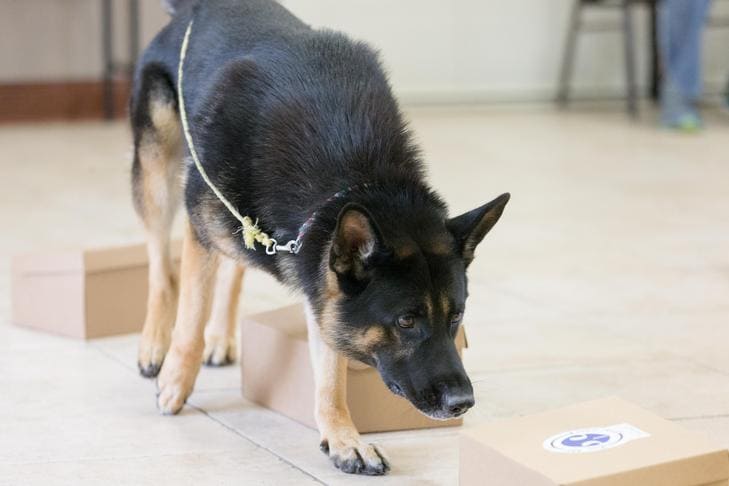
4. Scent Games Brain Training for Dogs
Game Ideas
- Find the Treat: Teach your dog to find treats by hiding them around the house or yard and rewarding them with sniffs. It improves their sense of smell to a greater extent.
- Scent Trails: Set out a trail with a particular smell (such as vanilla or anise) and conceal a toy or treat at the end.
- Scent Matching: Train your dog to recognize and match various scents by using scent training kits. So, if you are thinking, does brain training for dogs work? It literally does, as in this case, it would improve the sense of smell for tracking items.
Advantages
- Makes Use of Natural Abilities: Takes advantage of the dog’s keen sense of smell.
- Mental Challenge: Encourages the dog to process and follow scents by stimulating the brain.
- Could Be Therapeutic: Helps high-energy or nervous dogs focus and become calm. Moreover, it proves as a fun brain game.
Training Suggestions
- Introduce Gradually: Begin with easy-to-learn smell games and work your way up to more sophisticated ones.
- Use great-value Rewards: Use toys or snacks that are in great demand to motivate engagement.
- Keep It Fun: To keep the dog interested, keep a cheerful and upbeat approach.
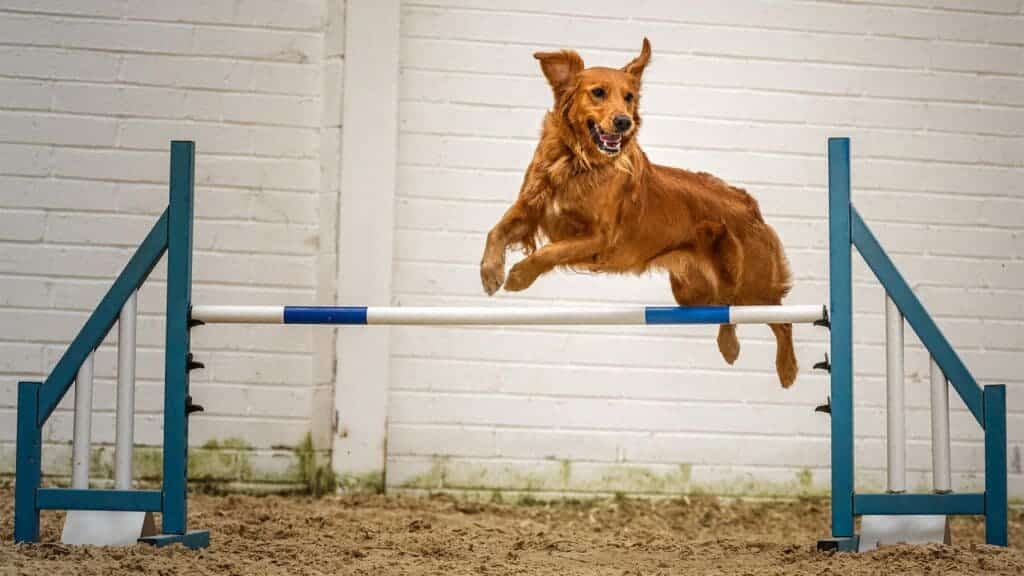
5. Agility Brain Training for Dogs
Equipment
- Jumps: Obstacles that can be adjusted in height for the dog to clear.
- Tunnels: The dog runs through long, stretchy tubes.
- Weave Poles: The dog weaves through a set of vertical poles.
- Other Challenges: Pause tables, teeter-totters, and A-frames.
Setup
- Backyard Course: Build a course yourself with common household items or buy agility gear.
- Agility Classes: Join agility clubs or enroll in nearby classes. It will prove conducive training for the brain for dogs.
Advantages
- Combines Mental and Physical Exercise: This exercise works the dog’s body and mind at the same time.
- Improves Coordination and Focus: This improves mental focus and physical agility.
- Strengthens Bond: Encourages cooperation and dialogue between owner and dog
Training Tips
- Begin Basic: Before integrating obstacles into a course, introduce them one at a time.
- Apply Positive Reinforcement: Give praise, toys, and sweets as rewards.
- Slowly Increase Difficulty: As the dog gains proficiency, increase the course’s complexity.
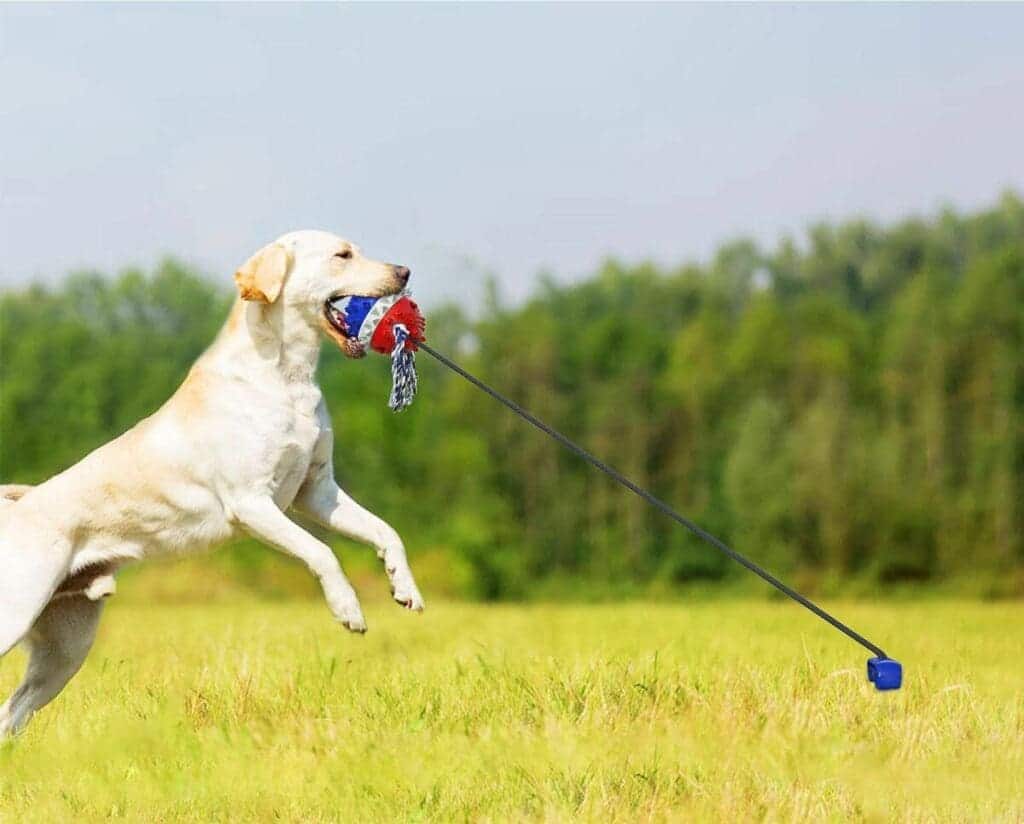
6. Interactive Games and Tug of War
The last among the famous brain games for dogs is tug of war.
Games
- Tug-of-War: Make careful to play safely and according to the fundamentals (e.g., release on command). Use a solid rope toy.
- Fetch with orders: Before tossing the ball, add orders like sit, stay, or down.
- Interactive Toys: Dogs can be entertained with toys that move randomly, squeak, or crinkle.
How to Play
- Set Rules: To guarantee safe and fair play, establish rules for games like tug-of-war.
- Incorporate Commands: Remind training commands and appropriate behavior during recreation.
- Rotate Toys: To keep things exciting and engaging, rotate a variety of toys.
Advantages
- Intellectual and Physical Excitation: Maintains the dog’s mental and physical activity.
- Reinforces Obedience: An enjoyable environment in which to practice following instructions.
- Strengthens Bond: Encourages constructive communication and fortifies the bond.
Training
- Advice Consistency: Play by the rules and commands consistently.
- Positive Reinforcement: Give treats, praise, or more time to play to encourage desired behavior.
- Keep an eye out for safety: Make sure toys are secure and in good working order to avoid accidents.
You can learn about other techniques and games for efficient brain training of dogs in this article.
Basic Principles of Brain Training for Dogs
Dogs need brain training for their general pleasure and mental health. Adhering to some key principles is vital to maximizing the efficiency of training sessions:
1. Consistency: Regular training sessions result in improved performance. To effectively reinforce desirable actions, create a routine and follow it.
2. Positive Reinforcement: To reward and reinforce behaviors you want, give food, praise, or toys. Your dog will enjoy learning when you provide them with positive reinforcement, which also helps to develop your bond with them.
3. Short Sessions: To keep your dog’s attention and keep him from becoming bored or frustrated, keep training sessions brief and interesting. Instead of doing one extended session over the day, try to do numerous shorter ones.
4. Encouragement and Patience: When it comes to your dog’s improvement, exercise patience and try not to get upset. Promote even small movements in the direction of the desired behavior and acknowledge their accomplishments.
5. Adaptability: Adjust training techniques to fit the unique requirements, tastes, and learning preferences of your dog. Be adaptable in your approach because what works for one dog might not work for another.
You can provide your dog with a positive and productive learning environment that will stimulate their mind, help them solve problems, and improve their general well-being by following these fundamental guidelines.
Conclusion
The lowdown on the article is that it covered basic 6 games for effective brain training of dogs. One who owns a furry fellow and desires to provoke its natural ability and mindfulness should engage him in the above-mentioned games. Let’s embrace the journey to owning a healthy canine partner.

